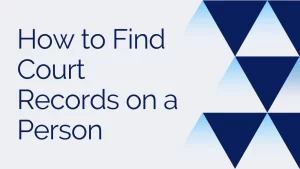What Does Court Remand Mean?
Court remand refers to an appellate or higher court sending a case back to the lower court for further action. This typically happens after a party to the case appeals the initial decision of the lower court.
Definition of Court Remand
When a court remands a case, it is returning the case to the lower court from which it originated to reconsider parts of the case or hold further proceedings consistent with the appellate court’s ruling. The appellate court may remand with general or specific instructions for the lower court to follow.
Reasons for Court Remand
There are a few common reasons an appellate court may choose to remand a case rather than make a final ruling itself:
Remand for Further Proceedings
The appellate court might determine that additional evidentiary hearings or arguments at the lower court level are warranted before a final decision can be made. This allows all parties to present further evidence.
Remand for Correction of Errors
At times, the appellate court finds that the lower court made significant legal or procedural errors that impacted the outcome or the rights of one or more parties. The case will be sent back to correct those errors and possibly adjust the ruling accordingly.
Remand with Instructions
The higher court may identify specific instructions related to the errors or issues for the lower court to address when revisiting the case. This helps to correct the problems without fully reversing the ruling.
The Remand Process
To understand what happens when a court remands a case, it helps to know a little about the standard appeal process that leads up to a remand decision.
The Initial Court Decision
The first court that hears a case will make an initial decision based on the evidence and legal arguments presented. If one or more parties believe the judge or jury got the decision wrong, they can choose to appeal it to a higher court.
Appealing the Decision
In the appeal, the appellant will argue that significant legal, procedural, or factual errors impacted the fairness or outcome of the lower court proceedings. The appellee will contend that the lower decision was reasonable and made without reversible error.
The Appellate Court’s Options
After hearing oral arguments and reviewing evidence and records from the lower court case, the appellate court has several options:
Affirm the Lower Court’s Decision
If the higher judges find no reason to overturn or modify the lower court’s judgment, they will affirm it, meaning the initial decision stands.
Reverse the Lower Court’s Decision
Reversal occurs when the appeals court determines that egregious and prejudicial errors occurred in the previous trial, undermining the reliability of the outcome. They overturn the decision and either order a new trial or issue their own ruling in the case.
Remand the Case Back to Lower Court
As discussed above, the third option is to remand or send the case back for additional proceedings and another look by the lower court, as directed in the higher court’s opinion.
What Happens After a Court Remand
If a court remands a case, it gets sent back down to the trial court level for further action consistent with the appeals court mandate.
The Lower Court Follows Appellate Instructions
Most often, the higher court ordering the remand will clearly define what the lower court needs to revisit or revise in its previous judgment. This may include holding an additional hearing, applying a different legal standard, allowing certain evidence previously disallowed, recalculating damages, obtaining additional expert witness testimony, having the trial jury reconsider parts of its verdict, or any number of procedural corrections.
Holding Further Proceedings on the Case
In other situations, the remand is more open-ended, allowing the trial court to reopen arguments or gather new evidence to address issues raised in the appeal before issuing a modified ruling. If the case involved a bench trial originally, the same judge will typically reconsider the case upon remand. For a jury trial, the same jury may hear the case again, or a new jury may be selected.
Revising the Initial Decision
After following the mandated procedural corrections and considering updated evidence and testimony, the lower court will then revise and reissue their decision in the case. Once finalized, this new judgment may again be appealed up to a higher court for review and potentially another remand, beginning the cycle over again.
Key Impacts of a Remand
When a court remand sends a case back down to address errors or conduct additional proceedings, it can significantly impact the case in various ways:
Adding Time to the Legal Process
Waiting for the lower court to correct issues and holding additional hearings inevitability draws out the litigation process longer. Rather than resolving the case after one appeal, remands mean starting back at square one. This can extend cases for months or even years.
Altering the Final Decision
Since the lower court is revising their initial judgment after receiving guidance from the appeals court, there is no guarantee the outcome will remain the same. Their second decision may end up being quite different from the original based on adjusting certain procedural problems or legal standards.
Requiring Further Argumentation
For the parties involved, a remand usually means more extensive research, evidence gathering, motion filing, and arguments requiring significant time and legal expenses. It also postpones final closure or consequences in the case.
Examples of Court Remands
Court remands happen on thousands of cases each year addressing a diverse range of legal fields including both civil and criminal law. A few notable examples:
- In Celebrezze v. Netzley (1990), an Appeals Court remanded the case for further consideration of evidence on whether the defendant suffered prejudice after ineffective counsel failed to object to inadmissible evidence.
- The Supreme Court’s decision in Koons v. United States (2018) remanded the case to determine if previous sentences violated fairness, needing revised sentencing proceedings and analysis of comparative cases.
- In Allen v. Cooper (2020), the Supreme Court affirmed copyright standards must apply, remanding the case for application of those correct statutory provisions.
These cases illustrate how commonly both higher and lower courts participate in remand procedures to adjust procedural errors or issues requiring deeper analysis using consistent standards.
Conclusion
In summary, court remand refers to an appellate practice where a higher court returns a case back down to the originating lower court for reconsideration and often for revised judgment following specific instructions. Key reasons for remand include needing additional evidence or hearings, correcting prejudicial errors by the trial court, and applying more appropriate legal standards before ruling. While lengthening the litigation process, remands serve as a compromise measure allowing lower courts to adjust their work rather than face outright reversal. By facilitating these do-overs, remands aim to enhance fairness, consistency, and just outcomes across the judicial system.
FAQs
- Is a remand the same as reversing a lower court’s decision?No, a remand is distinct from a reversal. An appeals court will reverse if they wholly disagree with the decision below due to prejudicial errors. Remand allows the lower court to correct problems short of absolute reversal.
- Can a lower court decision be appealed again after it is remanded?Yes, after a remand and issuing a revised ruling, the new judgment can again face appeal to contest any part of the outcome if a party continues seeing significant legal or procedural defects present.
- Who decides the instructions or scope given when remanding a case?The appeals court panel deciding on the appeal crafts direction on what errors, issues, or actions the lower court needs to reexamine when remanding. They shape remand instructions based on identified problems needing redress.
- Can evidence or testimony be limited by the appeals court upon remand?Potentially yes, the remand opinions may outline restrictions on what evidence gets presented upon remand or what factors the lower court can or cannot consider in their redetermination, depending on the nature of identified flaws needing correction.
- How common are district court decisions remanded for resentencing in criminal cases?Statistics show appeals courts remand roughly one-third to one-half of appealed cases involving sentencing disputes back to district courts for corrected analysis and resentencing, making it reasonably common.






